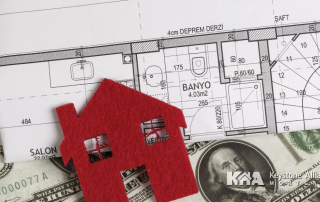How to Finance New Construction
You may be thinking to yourself, why is it so difficult to find a new construction loan? Well, there are a couple more prerequisites that need to be met in order to receive this kind of mortgage. First, many new home-buyers have less than perfect credit, plus their payment history is relatively sparse as compared to a seasoned property owner.
Generally, you need a credit score of 680 or higher. Additionally, your payment history should show very few late payments, at least two lines of credit, and that you’re clear of federal debt. If you just read this and started panicking about your credit score and your lack of collateral, take a deep breath, there are still options.
Let’s dig into the basics of a construction loan, the options of buying a “spec” home, and a variety of loan options that could work for you.
Construction Loans 101
As with any loan, it’s important to have your ducks in a row before you start looking for a lender. Having documentation readily available (i.e. W-2s, 1099s, pay stubs, tax returns, etc.) will help your lender expedite the process. Traditionally, potential home-buyers have only been able to finance new construction with a conventional loan; however, this creates a dilemma for those that have their hearts set on starting new.
While there are outliers (with a 3.5% down payment), usually, conventional construction loans are going to require 20% to 30% down. To put those numbers in perspective, if you’re looking at building a $200,000 house, you could pay as much as $20,000 upfront.
In addition, you still have to pay closing costs ranging from 2 to 5%. With this laundry list of expenses and requirements for a conventional construction loan, Co/LAB Lending offers another option.
Consider a Spec Home
If you’re unfamiliar with the term, a “spec” home is a home that is constructed by a builder who is speculating that a home-buyer will come along and purchase the house. While they’re not as customizable as a house started from scratch, they generally include various options such as materials used, minor floor plan preferences, and other small additions.
Because the builder is putting up their own money on the lot and construction, home-buyers are able to utilize more mortgage options than a conventional loan allows.
Borrowers now have the ability to apply for:
- Federal Housing Administration (FHA) loan
- United States Department of Agriculture (USDA) loan
- Veterans Affairs (VA) loan
What Does the Bank Want?
There is one holdup with spec homes. Banks are adamant that spec homes are finished before you can be approved for the loan. Thus, you need to find a builder who is willing to build the home with their money and then sell it to you.
For instance, to be approved for an FHA loan, the property has to meet the FHA’s minimum property standards (MPS). These requirements include, but are not limited to: adequate electrical power (minimum of 60 amps), proper building materials (i.e. treated wood, proper roofing, NO asbestos), windows, and doors with appropriate weather stripping, and the house must meet building code durability specifications.
In essence, the house has to be complete in order to meet those requirements. Although most home-buyers get anxious to move in right away, it’s required that borrowers don’t move in until the house is 100% finished and a final inspection is mandatory before the owner moves in.
How A Spec Home Can Become a Custom Home…Or Close To It
Because of the difficulty some home-buyers have in getting approved for conventional loans, some builders will simply advertise a lot. After collecting a nonrefundable deposit, they will build a home to your specifications as if it were a completely custom build.
Nonrefundable deposits generally range anywhere from $5,000 to $15,000. It may seem steep, however, your mortgage options open up significantly with down payments ranging as little as 0 to 3.5%. Plus, that payment goes toward the purchase price of the house upon completion.
Another perk of going with a spec home is being eligible for a lender credit. This can mean major savings come closing time. When a home-buyer uses lender credit, they trade lower closing costs for a higher interest rate. The perk of lender credit is more advantageous for home-buyers looking to sell the house in 10 to 15 years because they will owe considerably less on their mortgage at the time of sale.
If you’re looking for a company who can tailor mortgage options to your needs, click here to contact Co/LAB Lending to find a loan that works for you.
Mortgage Consultation Today!
Categories
- Credit (4)
- FHA Loans (3)
- Finances (3)
- First Time Home Buyers (6)
- Grab Bag (7)
- Home Technology (1)
- Homebuying Tips (17)
- Inspiration (1)
- Insurance (3)
- Interest Rates (3)
- Loan Process (1)
- Mortgage Financing (14)
- Motivation (1)
- News (1)
- Press Release (8)
- Renovation (2)
- Self Employed (1)
- Tips & tricks (1)
- Uncategorized (134)
- USDA Loans (1)
- VA Loans (2)




